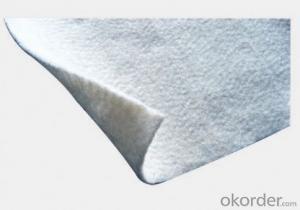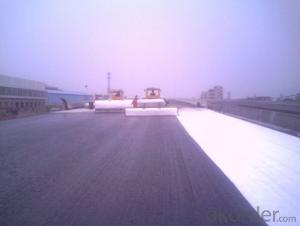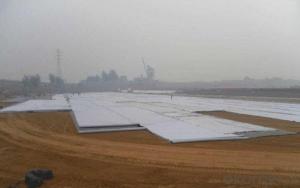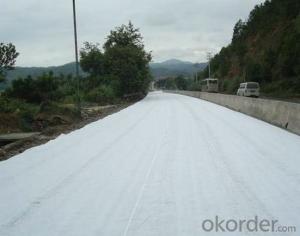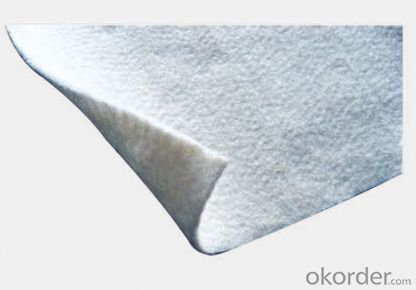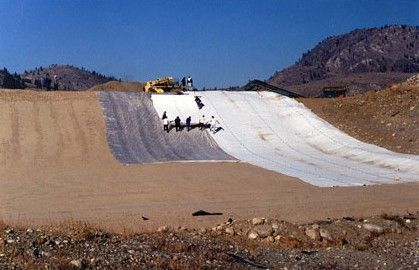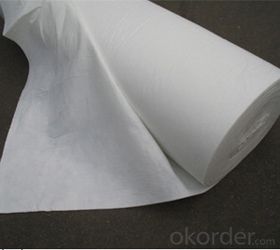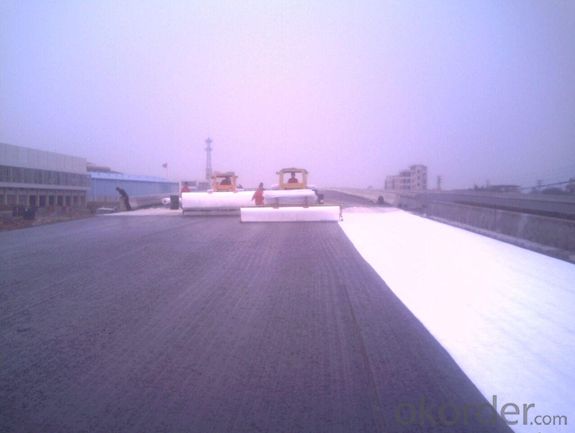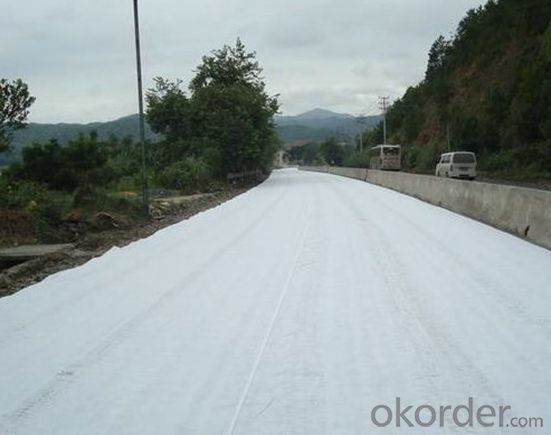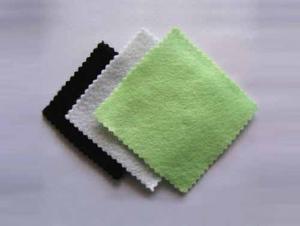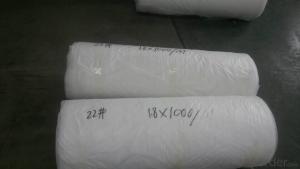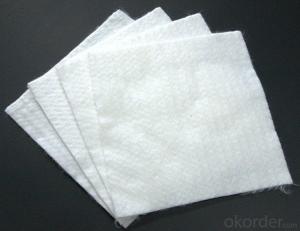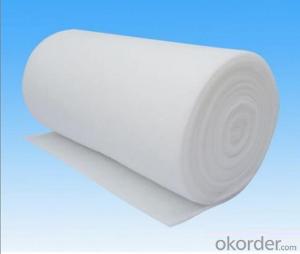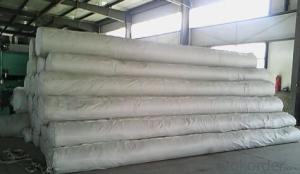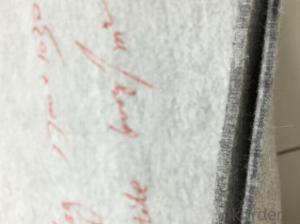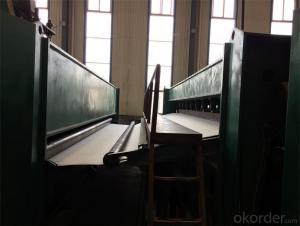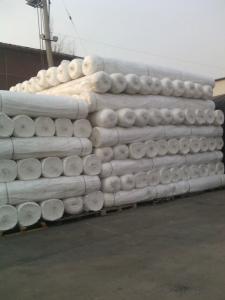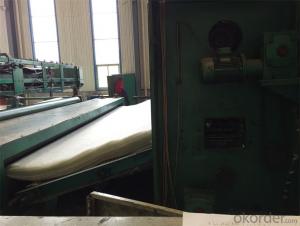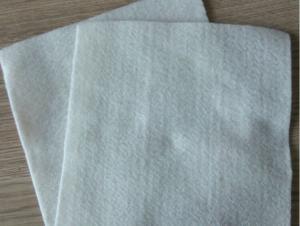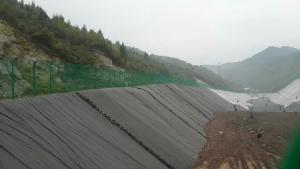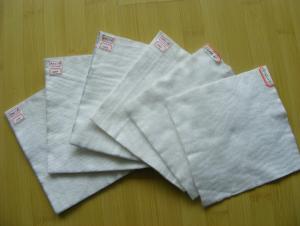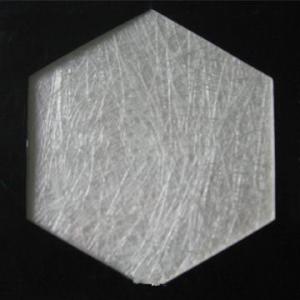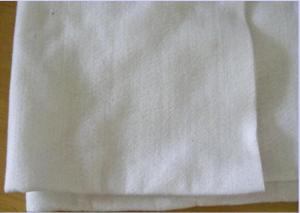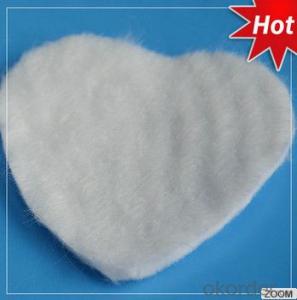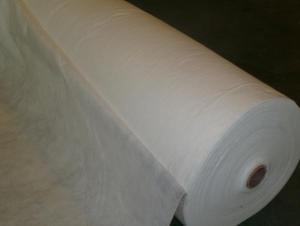Geotextile Sand Filter - Pet Continuous Filament Spunbond Needle Punched Nonwoven Geotextile
- Loading Port:
- Qingdao
- Payment Terms:
- TT OR LC
- Min Order Qty:
- 20000 m²
- Supply Capability:
- 1500000 m²/month
OKorder Service Pledge
OKorder Financial Service
You Might Also Like
Specifications of PET Continuous Filament Spunbond Needle Punched Nonwoven Geotextile
1) Weight / Mass: 100g/m2-1500g/m2
2) Width: Within 8 m (1m-8m)
3) Length: 50m-100m/roll (as request)
4) Material: PP / PET
5) Color: Black , white , grey and other color
6) Certificate: CE/ISO9001 , ISO14001
7) Manufacturing method: nonwoven / woven
8) The Biggest geotextile manufacturer/factory in China for many years
FAQ:
What is the main application of PET Continuous Filament Spunbond Needle Punched Nonwoven Geotextile ?
The main application of our PET Continuous Filament Spunbond Needle Punched Nonwoven Geotextile is as follows: The highway, railway, soil-stone dam, breakwater, airport, backfill soil of retaining wall, slope protection, etc.
Where is your main market?
Our main market is in Middle East, South America and some African countries.
What is your advantages for PET Continuous Filament Spunbond Needle Punched Nonwoven Geotextile ?
One of the largest manufacturer of PET Continuous Filament Spunbond Needle Punched Nonwoven Geotextile for Construction with advanced equipment, big production capacity and excellent quality.
- Q: How do geotextiles help in the reinforcement of soil?
- Geotextiles help in the reinforcement of soil by providing a stable and strong layer that enhances the soil's mechanical properties. They act as a barrier against soil erosion, distribute loads more evenly, and improve the overall stability and strength of the soil.
- Q: Can geotextiles be used in geotechnical engineering projects?
- Yes, geotextiles can be used in geotechnical engineering projects. Geotextiles are permeable fabrics that are commonly used to enhance the performance and stability of soil in various geotechnical applications, such as erosion control, soil stabilization, drainage systems, and reinforcement of weak soils. They can improve the overall strength and durability of the soil, prevent erosion, and provide filtration and drainage capabilities.
- Q: What is the difference between polypropylene geotextile, polypropylene geotextile and polyester geotextile
- The raw material is not the same as the clothes have the same cotton polyester tea is the same characteristics of the characteristics of acid-resistant polyester anti-purple better look at where to see where the 4935 penguins
- Q: How do geotextiles improve the performance of geocomposites?
- Geotextiles improve the performance of geocomposites by providing reinforcement, filtration, and separation functions. They enhance the strength and stability of the geocomposite structure, prevent soil erosion and migration, and promote the efficient drainage of water and other fluids.
- Q: What are the factors to consider when selecting geotextiles for a project?
- Some factors to consider when selecting geotextiles for a project include the required strength and durability of the material, the desired permeability for water flow, the appropriate weight or thickness for the specific application, the compatibility with the soil or aggregate materials, the resistance to UV degradation, and the cost-effectiveness of the product. Additionally, factors such as installation and maintenance requirements, as well as any specific project constraints or regulations, should also be taken into account when making a selection.
- Q: How do geotextiles contribute to soil stabilization?
- Geotextiles contribute to soil stabilization by acting as a barrier that prevents soil erosion, reduces sedimentation, and improves overall soil strength. They provide reinforcement by distributing loads and preventing soil particles from moving, thus stabilizing the soil and preventing slope failures. Additionally, geotextiles promote moisture retention and drainage, enhancing the soil's stability and preventing water-induced damage.
- Q: What kind of geotextile is used to repair the road?
- Geotextile in the application of the road: a slope care, specifications in the 250-350g / m2 its role has the following three points: 1. filter when the water from the fine soil into the coarse soil layer, the use of polyester staple fiber Acupuncture geotextile good permeability and water permeability, so that water through, and effectively carrying soil particles, sand, small stone, etc., in order to maintain the stability of soil and water engineering. 2. Drain polyester staple fiber geotextile has a good water conductivity, it can form a drainage channel within the soil, the soil structure of excess liquid and gas efflux. 3. Protection of water flow on the soil erosion, the effective concentration of concentrated diffusion, transmission or decomposition, to prevent the soil by external forces and damage. Second, the foundation treatment, the main role is to strengthen. The use of polyester staple acupuncture geotextile to enhance the soil tensile strength and resistance to deformation, enhance the stability of the building structure to improve soil quality. Specifications not low 400g / m2. The main role is to use the polyester staple fiber geotextile with different physical properties (particle size, distribution, consistency and density, etc.) of the building materials (such as soil and sand, soil and concrete, etc.) ) To isolate. So that two or more materials are not lost, not mixed, to maintain the overall structure and function of the material, so that the building capacity to enhance the capacity. Specifications in the 150-400g / m2
- Q: Precautions for Polyester Filament Geotextiles
- 1. Geotextiles can only be cut with a geotextile (hook knife), such as in the field of cutting, other materials to take special protective measures to prevent the cutting of geotextiles and its unnecessary damage; Laying geotextile at the same time, must take all necessary measures to prevent damage to the following layer of material; 3. In the laying of geotextiles, we must pay attention not to let the stone, a lot of dust or moisture may damage the geotextile, Drains or filters, or materials that may cause difficulties for subsequent connections to enter beneath geotextiles or geotextiles; 4. After installation, visualize all geotextile surfaces to identify all damaged landlords Marking and repairing, to determine the laying of the surface can not cause damage to foreign substances, such as broken needle and other foreign body; 5. Geotextile connection must follow the following provisions: Under normal circumstances, the slope can not have a horizontal connection (connection along the slope The contours do not intersect with them), except where the patch is located. 6. If the use of suture, suture should be used with geotextile material the same or more than the material, suture should be anti-chemical UV material holding. Suture and geotextile should have a significant color difference in order to facilitate inspection. 7. Special attention to suturing during installation to ensure that no gravel in the soil or gravel cover is in the middle of the geotextile.
- Q: Why is the roadbed geotextile
- Geotextile is also very many kinds of it, you can say that the specific point of it, geotextile gas barrier to seepage, filter and so on, the general use is to prevent cracks reflected to the above
- Q: Are geotextiles suitable for use in geocell retaining walls?
- Yes, geotextiles are suitable for use in geocell retaining walls. Geotextiles help in enhancing the structural stability of the geocell walls by providing soil confinement, filtration, and erosion control. They prevent soil migration, improve drainage, and increase load-bearing capacity, making geotextiles an ideal choice for reinforcing geocell retaining walls.
Send your message to us
Geotextile Sand Filter - Pet Continuous Filament Spunbond Needle Punched Nonwoven Geotextile
- Loading Port:
- Qingdao
- Payment Terms:
- TT OR LC
- Min Order Qty:
- 20000 m²
- Supply Capability:
- 1500000 m²/month
OKorder Service Pledge
OKorder Financial Service
Similar products
Hot products
Hot Searches
Related keywords
